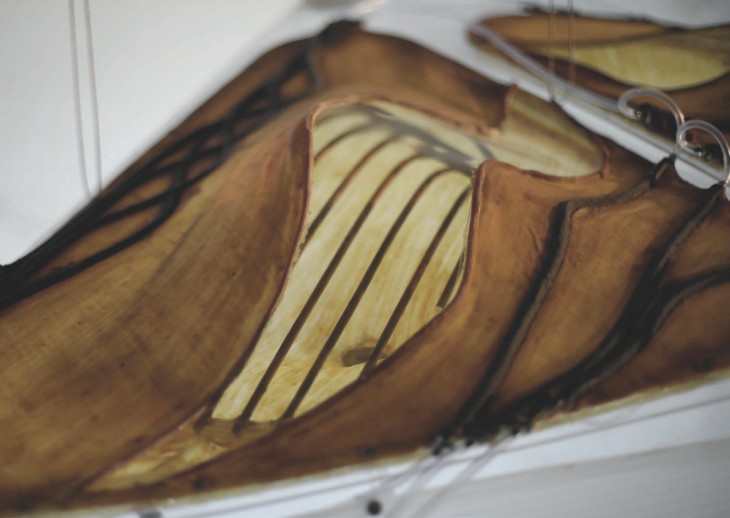“Nothing is constant but change! All existence is a perpetual flux of ‘being and becoming!’
That is the broad lesson of the evolution of the world.”
Ernst Haeckel [1]
“…the form of an object is a ‘diagram of forces’….”
D’Arcy Wentworth Thompson [2]
“…form is only a snapshot view of transition…”
Henri Bergson [3]
STATEMENT
Focusing into the increasing problem of saltwater intrution in land water sources caused by over-exploitation of groundwater sources for agricultural uses, this dissertation aim to study an efficient way to clean and use the contaminated water.
CONCEPT
Hidro-mediating Interface is a spatialization of an innovative, low-tech water desalination process.
The goal is to reveal new technologies but not for the sake of the image of technology itself.
The project is instead focused on generating technological ambience. The division between technology and culture – and building technology and architecture – begin to dissolve into a hybrid spatial sensibility.
Fluid flows, structural patterning and lighting are all combine into a coherent whole, generating an unexpectedly vivid atmosphere.
PROCESS
Recently, a re-examination of existing seawater greenhouse technologies has revealed possibilities for gradients scales, sustainable desalination using deep seawater and warm sea laminar water in an evaporation-condensation loop.
PROTOTYPE
The project is a landscape greenhouse-canopia characterized by two performative pattern logics. The first is a three dimentional meshwork of capillaries within which cold saltwater (from a local deep source) is circulated in loop. The second is a series of vascular flow intaken, which direct warm saltwater (surface layer) over the capillaries. Saltwater is sprayed into specific areas, the so called vacuoles, this warm air as it enters, increasing its water content. The trasparent lenses creates additional heat in the sub-interior space, allowing the air to take on even more airborne moinsture. Then, when this super-humidified air comes into contact with the chilled micro-pipes, it condensates.
The condensate – distilled – drips down the capillaries into pleated troughs below, which lead to seasonal storage tanks.
DESIGN VISION
The hydronic and structural processes will be legible, but in an ambient, atmospheric way. The aim is not the creation of a “mechanical landmark”, but rather the creation of natural interactive space defined by crossovers of technology, culture, and metabolic behaviours.

